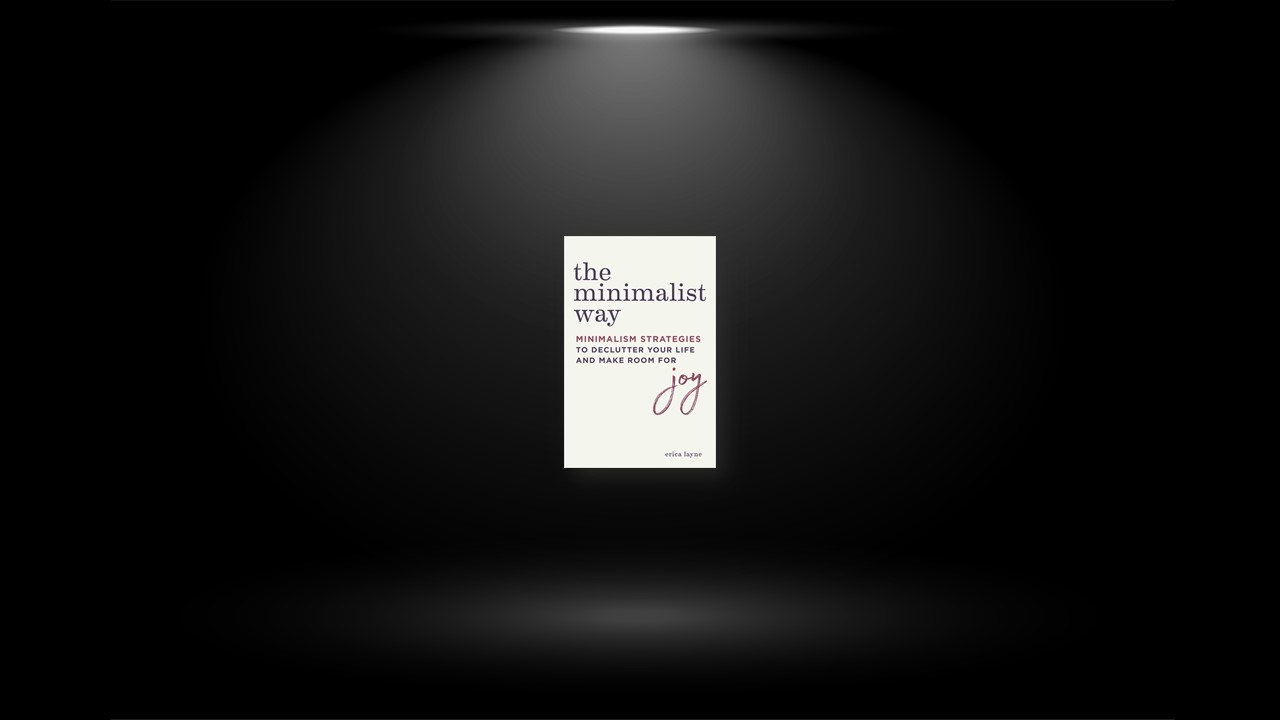Thinking Like a Minimalist
It’s staggering, the volume of advertising we take in during a single day—not to mention the cleverness of those adds. Digital marketing experts report that Americans see 4,000 to 10,000 brand messages a day. And many of these advertisements are tailored precisely to our interests, based on where we click and what we share online. Additionally, because brands partner with influencers on popular social media platforms, we’re often seeing products promoted in our own feeds, from people we choose to follow.
Monumentally over the last few decades, with advertising becoming subtler and yet more pervasive. We’ve grown up surrounded by it and submerged in the message that more is better. Thinking like a minimalist means questioning the status quo. If you want to adopt a minimalist mind-set, start by regularly asking yourself these questions:
How can I reduce my exposure to advertising, whether direct or indirect, so I’m not introduced to so many products I’m tempted to buy? •Can I get even more honest with myself about the difference between a want and a need? •How long does the euphoria of a new purchase really last? •Would I rather own this item or have that experience? •How much time am I going to devote over the next several years to maintaining this product? (Replacing batteries, cleaning it, dry cleaning it, repairing it, etc.) •How do I feel in a crowded, cluttered environment? •Does my home visually represent the person I’m trying to be? •Who will sort through my belongings after I’m gone, and what can I do now to lessen that burden?
When you start seeing your life through a minimalist lens, you’ll stop wanting a bigger home, a bigger home just means more to clean, you’ll stop trying to fill walls with frame and artwork, visually, less become more, you’ll gradually stop caring as much about how you look in the eyes of others, your life will match the values and this will leave you more contentment and more confidence than ever before.
3 Thought Patterns that Fuel Overconsumption
- Emotional Avoidance
Think about it—how often do you make a purchase because you think it’s a solution to a direct problem? Maybe you buy something to alleviate a point of friction around the house, like buying a new storage basket for loose items. If you’re a parent, maybe you sometimes buy something to appease the kids. We often tell ourselves we’re buying something for legitimate reasons, like the ones mentioned, but really …
It’s a little release, a dopamine hit, a distraction, a means of numbing. Many of us will do anything to escape actually experiencing our own emotions—especially the difficult ones. For some, it’s eating chocolate; for others, it’s a glass of wine or a few mindless episodes on Netflix
For plenty of us, it’s spending. This is why shopping is so often jokingly referred to as “retail therapy”; we use it to create short-term pleasure that helps numb underlying emotions.
- Scarcity Thinking
Have you ever hung onto a pair of shoes that were falling apart because you wondered if you’d ever like another pair quite as much? Have you maxed out your budget during a sale by one of your favorite retailers because you convinced yourself they would never run a sale that good again? Have you ever clicked “add to cart” just because you noticed small red text saying “only 5 left”?
This is scarcity thinking: the belief that resources will run out, balanced against the knowledge that our wants and needs will not. We often let ourselves fall into this mind-set because scarcity feels like such a justifiable reason to make a purchase or hang onto something we don’t need. And these two actions—buying new things and keeping old ones—leave us physically burdened and emotionally overwhelmed by the volume of things we’ve accumulated.
- The Comparison Game
someone else’s. Where once we might have graduated college and kept in touch with our fellow grads through the occasional phone call or lunch date, now—through social media—we’re often aware of every promotion, every new baby, every vacation, and every home purchase. The world has become infinitely smaller as we get a glimpse into the intimate lives of our childhood friends, long-lost cousins, co-workers, bosses, neighbors, fellow school parents, and even public figures.
What’s worse, we all know that this glimpse isn’t accurate. We tend to document the highlights of our lives, leave out the messes and the struggles, and throw a filter on reality. We know as we scroll that no one’s hair always looks perfect and no one’s home is always immaculate. But still, when it’s right in front of you, it’s hard not to compare.
Joy and Fulfillment: A New Approach to Consuming
The kind of consumption most of our society is practicing offers distraction and temporary satisfaction. Distraction from our problems, and the temporary satisfaction of buying something new. My hope is not that we stop consuming altogether, but that we consume more mindfully—and that our purchases actually support the lives of joy and fulfillment we’re creating. Instead of using consumption to build lives that look good, let’s limit our consumption and build lives that feel good. After all, a life that feels good has very little to do with the things we own.
Lori Sanders learned this lesson in a profound way during Hurricane Irma when she watched her husband swim through their front yard to capture a small, orange kayak so they could paddle to safety. As she sat precariously in a kayak with her husband, their 5-year-old son, and one small plastic bag of their belongings, she felt a sense of peace—completely out of place for the situation they were in—wash over her.
“At that moment,” she says, “I wasn’t thinking about what I left behind, only that right then I had everything I needed. I knew as long as we had each other, we would be okay.”
If you were to make a list right now of the things that make life joyful and fulfilling for you, what would it include? Quickly jot down what comes to mind.
most of us would put family and friends right at the top, because we inherently know that relationships are foundational to our happiness. Below that, you might list creative interests, the ways you give back or serve others, your faith, financial security, and having a sense of purpose in life and work.
This is the beautiful secret of minimalism: It may seem like it’s about the stuff, but once you’ve cut through the clutter and adopted a new frame of mind, you learn that it’s barely about “the stuff” at all.
Tips for Staying the Course
As passionate as you might be in this moment about adopting a minimalist lifestyle, that fire will sometimes flicker and lose its strength. And that’s okay. It doesn’t mean you’ve failed—not even close. When you anticipate that setbacks are part of the process, you’re less likely to abandon your vision and resume the cluttered, frenzied lifestyle you’ve tried so hard to escape. Obstacles are normal. Discouragement is a part of the process.
But this lifestyle—with so much potential to open you up to joy—is worth fighting for, so let’s choose a few concrete things you can focus on today.
- CHOOSE 1 TO 3 HABITS YOU WANT TO PERMANENTLY CHANGE
Having a clear vision is essential, but it’s really your daily actions—your habits—that determine your ability to bring that vision to life. There’s power in breaking old habits that weren’t serving you and forming new ones that will reinforce your minimalist way of life. To affect small and hopefully long-term change, choose one to three minimalist habits right now that you want to zero in on. Here are a few examples:
- Enjoy a screen-free period of time before bed (60 minutes, 30 minutes, 15 minutes—whatever suits), to give yourself more white space. •Stop your practice of shopping whenever you feel a negative emotion. •Only check email twice a day, at designated times. •Only use social media between certain hours. For example, 8 to 9 p.m. •Invest in your relationship with your mom (or any other loved one) by calling or visiting her once a week.
- FOCUS ON REPETITIONS
There’s no magic number—no number of days it takes to officially form a habit. But there are repetitions. In his book Atomic Habits, James Clear argues that it’s our repetitions that change us. He says:
“When you think about your goals, don’t just consider the outcome you want. Focus on the repetitions that lead to that place. Focus on the piles of work that come before the success. Focus on the hundreds of ceramic pots that come before the masterpiece.”
Whatever habits you’ve chosen to focus on, each time you do one “rep,” imagine yourself adding a tally mark to a chart in your mind. (Or better yet, track those repetitions on paper so you can see your progress.)
Every time you call a friend instead of logging onto your favorite retailer’s website, add a tally mark. Every time you have a Sunday evening planning session for the upcoming week, add a tally mark. Every time you put an item you no longer use into your give-away bin, add a tally mark. With repetition, our actions become habit. And intentional habits—habits that work for you—drive you further into a minimalist lifestyle and free up the bandwidth for you to tackle your higher priorities.
- WHEN YOU FALTER, PUT ALL YOUR ENERGY INTO YOUR NEXT ACTION
Setbacks are inevitable, but it’s what you do next that matters most. Sure, you hit a stressful season of your life and coped by quitting your decluttering efforts and continually prowling Amazon deals—or whatever your particular situation may be. Let yourself feel the disappointment, but then you have a choice to make. You can choose shame and self-loathing; you can allow yourself to believe you’ve failed. Or you can recognize the setback, accept yourself as human, and direct your thoughts and energy to your next steps. For most of us, the second option is much harder, because it goes against the way we’ve trained our minds, but it’s also the quickest, surest—and healthiest—way to get back on track.


